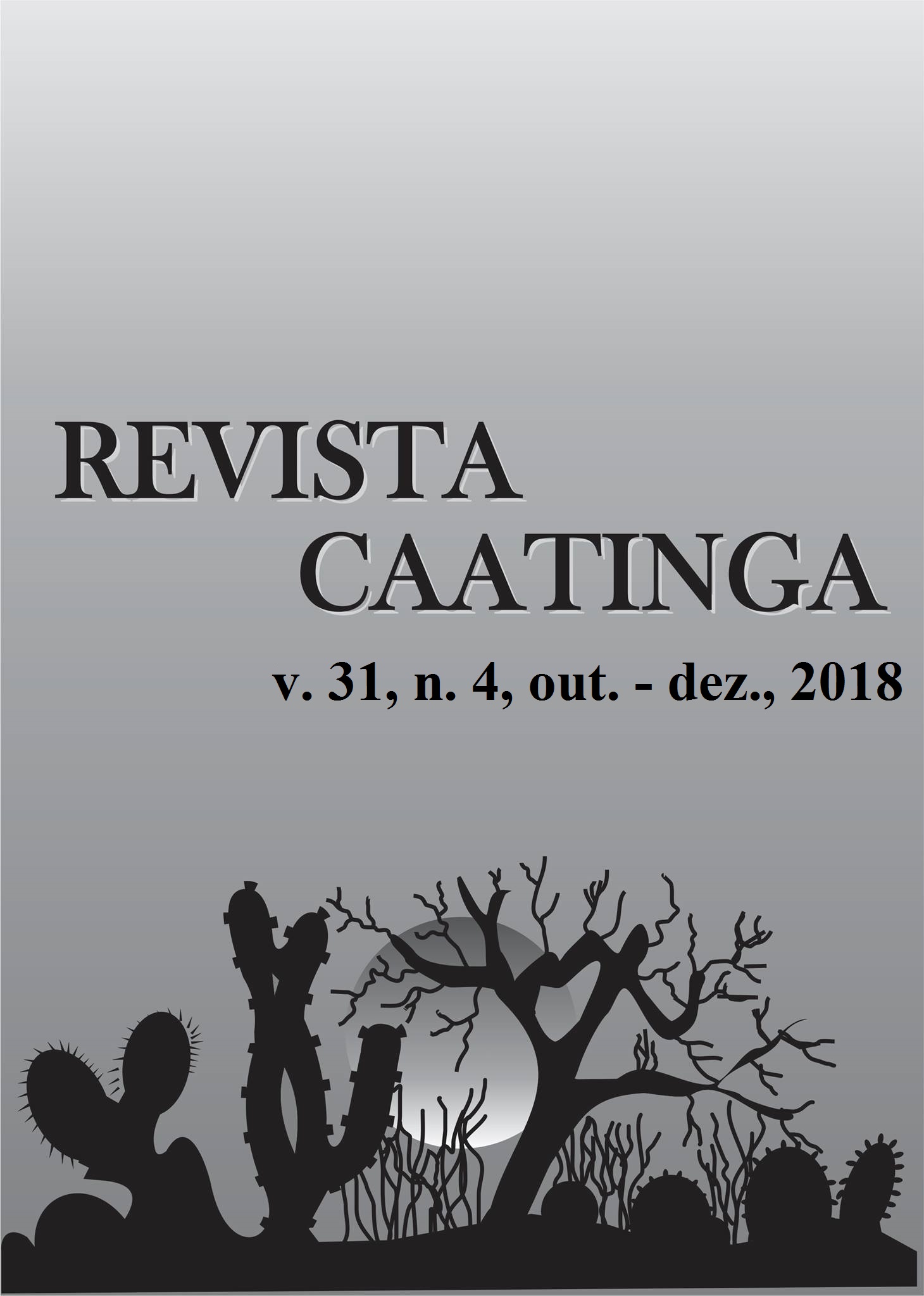EVALUATION OF CARNAUBA PROGENIES AND ESTIMATES OF GENETIC PARAMETERS IN THE JUVENILE PHASE
DOI:
https://doi.org/10.1590/1983-21252018v31n414rcKeywords:
Forestry. Genetic conservation. Genetic enhancement.Abstract
Carnauba (Copernicia prunifera) is a forest species with multiple uses, and is of great economic and social importance for several communities involved in extractive agriculture in northeastern Brazil. However, there are few studies on genetic variability in this species. Thus, this work aimed to produce information about the genetic characterization of C. prunifera seeds and seedlings, using provenance and progeny evaluations. A progeny test was performed in a plant nursery, using seeds of 36 matrices sampled in the municipalities of Mossoró and Apodi (Rio Grande do Norte State), and Russas and Icapuí (Ceará State). Three groups were derived according to the spatial distance between the collected matrices. Biometric analyses of the seeds were performed, adopting a completely randomized experimental design, with four replicates of 25 seeds in each analysis. A randomized block design (five replicates and five plants per plot) was used at the seedling production phase. The data evaluated included the emergence speed index, emergence percentage, leaf size, leaf base diameter, and survival (at 30, 60, and 90 days after sowing). The restricted maximum likelihood method was used in the statistical analysis, with the aid of SELEGEN software. In order to evaluate genetic variability in the C. prunifera population samples, it was verified that the juvenile characters presented a moderate genetic control. The three groups of spatially delimited matrices presented no significant genetic differences. This information may assist in the development of forestry practice for this species.
Downloads
Downloads
Published
Issue
Section
License
Os Autores que publicam na Revista Caatinga concordam com os seguintes termos:
a) Os Autores mantêm os direitos autorais e concedem à revista o direito de primeira publicação, com o trabalho simultaneamente licenciado sob a Licença Creative Commons do tipo atribuição CC-BY, para todo o conteúdo do periódico, exceto onde estiver identificado, que permite o compartilhamento do trabalho com reconhecimento da autoria e publicação inicial nesta revista, sem fins comerciais.
b) Os Autores têm autorização para distribuição não-exclusiva da versão do trabalho publicada nesta revista (ex.: publicar em repositório institucional ou como capítulo de livro), com reconhecimento de autoria e publicação inicial nesta revista.
c) Os Autores têm permissão e são estimulados a publicar e distribuir seu trabalho online (ex.: em repositórios institucionais ou na sua página pessoal) a qualquer ponto antes ou durante o processo editorial, já que isso pode gerar alterações produtivas, bem como aumentar o impacto e a citação do trabalho publicado (Veja O Efeito do Acesso Livre).







